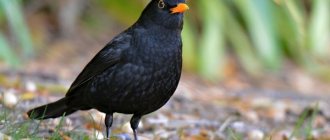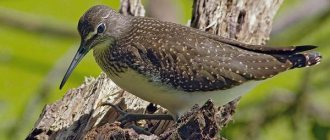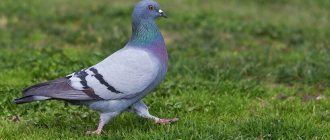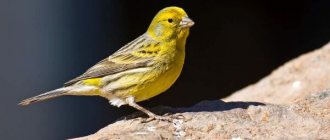Photo: UGC Eagles have special significance in human culture. Since ancient times, they have been depicted on royal coats of arms and banners of noble nobles. Myths and legends were formed about these birds. We will tell you the most interesting data about eagles.
The eagle is a bird of prey, which belongs to the hawk family. Ornithologists know 60 species of these birds. Of these, 46 live in Eurasia and Africa. There are few of these birds in other parts of the world. Most eagle species are found in Central and South America. Nine species of these birds live there. There are only two species in North America and three in Australia.
Here are the most amazing facts about these birds of prey:
Where do eagles live?
The habitat of eagles is extremely vast, and each representative of this family chooses unique areas for itself. A characteristic feature for each area of residence is their distance from the location of people and their life activities. Therefore, most often birds can be seen in the mountains or in semi-open areas.
Their distribution area involves their residence in forests, tundras, steppes, desert areas of Eurasia, Africa and North America.
Eagles are able to build nests on the ground, in trees or in mountains.
Golden eagles, which live in Russia, live over a vast territory stretching from the North Caucasus to the south of Primorye. When nesting, they prefer forests that are difficult for people to access. Wedge-tailed golden eagles, which are a species of golden eagles, similarly choose to live in the forested areas of New Guinea. Steppe eagles live in the territories of steppes and semi-desert regions, which are located in the region between Transbaikalia and the Black Sea.
Often, many peoples tame golden eagles, which have proven themselves in hunting as dexterous and hardy birds.
The black swift is a bird that flies almost non-stop
Swifts have very small legs, so they almost never land on the ground, as it is difficult for them to take off from a horizontal surface.
Another fast bird is the black swift. During a diving flight, its speed can be 166 km/h, and in a horizontal flight – about 111 km/h. Swifts surprise not only with their speed, but also with their ability to fly for a very long time. Scientists claim that they can be in the air for most of the year, excluding 2 months when they hatch chicks. During its life, a swift can fly millions of kilometers.
The black swift belongs to the swift family. Its body length is approximately 18 cm, and its wingspan is about 44 cm. The color is dark brown with a slight greenish sheen, and there is a white spot on the neck. The beak is small, black, the tail is fork-shaped, the paws are very small, light brown. In summer, the plumage may fade in the sun and look lighter than usual.
Distributed in Europe and Asia, wintering in Africa and southern India. They often settle in cities. Immediately after returning from wintering, they begin to build nests, which are arranged under the roofs of houses, in cracks in walls and in hollows of trees. The clutch usually consists of 2-3 small eggs. Swifts form permanent pairs and hatch chicks in turns. The chicks are in the nest under the care of their parents from 38 to 56 days, and when they leave it, they are able to fly well and get their own food.
These birds feed on various small insects, which they catch in flight. During nesting, in order not to leave the clutch, they can live without food for several days, during this period their body temperature decreases and a state of torpor sets in.
Kinds
The hawk family itself, which includes eagles, includes fourteen different subfamilies, including not only eagles, but also hawks, kites, etc. In the modern classification, there are about two dozen species of eagles, each of which has its own characteristics. The most notable varieties are the following.
Hawk eagle
Females of this species are larger in size than males.
Birds reach a size of about 75 cm, the wingspan is about 55 cm. The body weight of hawk eagles can reach up to 2.5 kg. Adult eagles have black plumage with brown on the back, a gray tail with a black transverse pattern. The belly area can be white with dark spots; there are also transverse stripes in the area of the legs and undertail. Young eagles have a rufous belly area with streaks that are also found near the neck and head. Their iris is also light brown, while adult birds have a yellow iris. The beak is gray-black, the claws are completely black.
Representatives of this species live in the tropics and subtropics in areas of Africa, Asia, and southern Europe. In Europe, hawk eagles are in danger of extinction due to the fact that they are constantly exterminated by people, killed on power lines or forced into migration due to changes in their habitat.
Pygmy eagle
The body sizes of representatives of this species are among the smallest - no more than 53 cm, while the wingspan is quite extensive, as it can reach up to 132 cm. The body weight of dwarf eagles is also small - about 500-1300 g. Females are larger than males, however, have the same plumage. The bird's tail is light and has no stripes. The beak is quite short, with a characteristic bend, and black. The paws are yellow, the claws are completely black.
The dwarf eagle can vary in plumage, as representatives of this species are divided into dark and light individuals. The first category has a dark brown-brown color, distributed over the entire surface of the body: from the back to the stomach. On the heads of eagles you can notice a golden or red tint. The second category has a brown back, a dirty white belly, and dark speckles in the chest area.
Representatives of this species can be seen in northwestern Africa. In Europe, dwarf eagles are found in France. Sometimes their nests can be seen in Turkey, Greece, India, Romania, etc. Birds that live in India lead a sedentary lifestyle, others belong to migratory species. For living, dwarf eagles prefer mainly deciduous forests, which are located near open areas.
Indian Hawk Eagle
Representatives of this species completely lack sexual dimorphism.
Representatives of this species can also be classified as small eagles, since their size does not exceed 60 cm. The wingspan is quite extensive - up to 140 cm. The wings of Indian hawks are rounded and quite long. Adults are characterized by black coloration on the back and sides. Their chin and throat area are white. The lower part of the body and wings are red-brown with wide dark stripes. There is a crest on the head. The beak is black, the iris of adult birds is dark brown.
Indian hawk eagles got their name due to their characteristic habitat, the Indo-Malayan zone, which includes Indochina, Malaysia, the Philippines, etc. In this area, birds prefer tropical and humid forests to live.
Stone eagle
The body size of stone eagles is considered average by the standards of representatives of this species - up to 72 cm. The wingspan range is quite extensive: from 60 to 180 cm. Males can grow up to 2 kg, females up to 2.5 kg. Stone eagles have wide wings and a rather short tail. The plumage can be dark, light or red.
Representatives of this species live in India, Nepal, Iran, western Africa, Namibia, etc. Stone eagles prefer savannah and steppe areas to live. Their nests can be located at an altitude of about 3 thousand meters above sea level.
steppe eagle
Steppe eagles in Russia are listed in the Red Book, as they are considered an endangered species.
Representatives of this species can grow up to 85 cm with a body weight of 4.8 kg. Their wingspan is at least 220 cm. Sexual dimorphism is manifested in size: females are larger than males. The color of adult individuals is dark brown, with a red spot on the back of the head. The wings are gray-brown. Young steppe eagles have a brown-ocher coloration with characteristic streaks.
Representatives of this species live on the territory of Russia in the Stavropol Territory, Astrakhan, Orenburg, Rostov regions, as well as in Asia. They are a migratory species that flies to Africa or India for the winter.
Greater Spotted Eagle
Representatives of this species are capable of reaching a size of 73 cm and weighing about 3 kg. Female Greater Spotted Eagles are larger than males. This species is distinguished by its larger size from the lesser spotted eagle, but apart from this, it is quite difficult to find external differences between them. The color of adult individuals is dark brown, the area of the back of the head and undertail is light. Young individuals have light spots on the back area that resemble drops in appearance. The beak and claws are black, the paws are yellow.
Greater spotted eagles live in Finland, Hungary, Romania, China, and Pakistan. They are also found in Russia in the Kaliningrad region.
Lesser Spotted Eagle
The size of lesser spotted eagles usually does not exceed 64 cm and weighs 1.8 kg. Their plumage is similar in appearance to Greater Spotted Eagles, but differs in lighter color. Representatives of this species live in Russia near St. Petersburg, Novgorod, and Tula. In addition, they can be found in India, Turkey, Hungary, etc.
Indian Spotted Eagle
Representatives of this species are named so due to their characteristic habitat areas. Indian spotted eagles settle not only in India, but also live in Nepal, Cambodia, and Bangladesh. Their sizes can reach 65 cm. Indian spotted eagles are strongly built individuals with a large head and short, wide wings. The color of the birds is brown.
Kaf eagle
The body size of representatives of this species can reach up to 95 cm, while the weight is around 4.5 kg. The wingspan of Kaf eagles reaches 2 meters. These birds live in Africa. To live, they choose dry areas far from people.
Moluccan eagle
Bird flight altitude record
But recently, Swedish scientists found that overgrown snipes (Gallinago media) can fly to a height of up to 8,700 meters. For comparison, the height of the largest mountain in the world, Everest, is 8,849 meters. The body length of great snipes reaches a maximum of 29 centimeters, and their weight does not exceed 260 grams. These birds make their nests in wet swamps and low rivers, mainly in Eurasia and Scandinavia. When it gets cold at these latitudes, they fly to the Sahel, a tropical region of Africa. During the flight, they accelerate to a speed of 100 kilometers per hour, thanks to which they cover a distance of up to 6,000 kilometers in 2-4 days.
Migratory great snipe (Gallinago media)
What do eagles eat?
The diet of eagles is characterized by the presence of a fairly extensive “menu”, which consists mainly of objects of animal origin. As a rule, they are quite large, although at the same time birds can eat small prey such as hares, fish, and gophers. The diet of eagles also includes domestic birds such as partridges, chickens, and pigeons. Eagles also do not disdain kingfishers and squirrels. Some species can also prey on venomous snakes.
If eagles go hungry for a long time, they can even feed on carrion found on land or in the aquatic environment.
If the hunt is successful, the eagles immediately eat the caught prey or take it to the nest to their chicks.
Immediately after eating, birds look for an opportunity to wash down their food with plenty of water. Once they're done with that, the eagles begin to preen and preen their feathers.
The diet of eagles is determined by characteristics that are directly related to their species and habitat. Both small animals and medium-sized prey can become prey. Large birds are quite capable of attacking small deer, antelope, roe deer, foxes and wolves. Eagles also often attack livestock such as cows and sheep. Eagles, which live in Australia and North and South America, eat bats, owls, and parrots.
Some eagles can even hunt in water, using diving to catch fish. They do not neglect other reptiles such as turtles or lizards.
Eagles obtain a significant portion of their food by hunting on the ground, while they catch other birds while flying. Predators circle above the ground, looking out for prey, in which their trained eyes and keen vision help them well. First, they hover in the air, and then throw themselves down like a stone, grabbing victims with strong claws. At this moment, the prey can no longer escape anywhere, and the eagles carry it to a convenient place.
Elena
Ask a Question
Question to the expert
What is the speed of an eagle's flight?
Eagles often simply soar above the ground, but even during such a soar they can reach speeds of about 200-230 km/h. At the same time, from the outside it may seem that the birds are moving quite slowly. This illusion is due to the altitude at which the flight takes place. Eagles can enter a dive at speeds of more than 300 km/h.
Offspring
Usually a couple gives birth to two eaglets per year . The family life of eagles resembles the everyday relationships of people. The male must get food, the female raises and feeds the babies, and protects the nest.
The strong character of eaglets manifests itself as soon as they emerge from the shell; it is the children who carry out natural selection; usually the strongest eaglet survives. For two months, the chicks fight for life; if the weaker eaglet manages to survive, then after eight weeks both eaglets will live peacefully in the nest. Kids are very gluttonous. Father and mother often have to fly away to hunt in order to feed the ever-hungry eaglets. A month and a half after birth, the eaglets begin to get food themselves; now they no longer need parental care. The eagle's diet consists mainly of meat.
Features of character and lifestyle
Eagles are among the monogamous birds that choose a partner once and for life. This determines their distribution patterns: birds often live exclusively in pairs. Eagles can even go out in pairs to hunt.
During their circling in the sky, they not only look out for possible prey, but also monitor the state of their territory, noting whether there are enemies nearby.
At the same time, eagles do not need to hunt every day, since they are able to store food in their crops for several days.
Although the traditional method of hunting for eagles is to soar high, they are also capable of ambushing their prey. Most often they hide in spreading branches of trees, from where they subsequently attack. The eagles deal with each victim in their own way.
Eagles do not hunt for as long as other birds of prey. They devote most of the day to observing their territory, studying everything that happens around them. The ability to preserve food helps them reduce their hunting time.
Habitat destruction
Habitat destruction is one of the biggest threats. The birds' territory typically extends up to 100 square kilometers, and they return to the same nest year after year.
Eagles are persecuted by people for hunting livestock or killing game such as grouse. Many eagles were indirectly poisoned by carrion, which in turn died from pesticides.
In some regions, birds are hunted for their feathers, and eggs are stolen for illegal sale on the black market.
Reproduction of eagles
Birds reach sexual maturity only in the fifth year of life. Young individuals who have never entered into a mating relationship can travel considerable distances in search of a suitable partner. After finding their soul mate, the birds begin building a nest and organizing a sedentary lifestyle.
The mating season among eagles is accompanied by exciting and spectacular games, during which the male and female chase each other. Mating games take place exclusively in the air, where birds chase each other, drawing complex aerial figures.
Based on the specific type of predator, an eagle's nest can be seen on a bush, on a tree, on rocks or in the mountains. Both partners are usually involved in arranging the nest, but ornithologists believe that females work more on this. If males create a frame, then females improve the place where chicks will appear in the future. After construction, the nest turns out to be solid and reliable. If it survives the first year of use, birds can continue to use it for several years.
Sometimes eagles can seize nests that were already built by similar large birds, for example, crows or falcons. This rule is valid if the nest size is suitable for the eagles.
Recommended by topic
Blackbirds Woodpecker Heron
Females are able to lay eggs only once a year, and their number does not exceed 3 pieces. Hatching eggs is no different from similar processes occurring in other birds. When newborns are born, they immediately begin to compete with each other for survival. As a result of constant conflicts and fights within the nest, the weakest individuals are eliminated. They can either receive a strong blow from their relatives with their beak, or fall out of the nest if they are pushed out by competitors.
Among all representatives of this species, the best parents are considered to be gravediggers, who incubate eggs, replacing each other. Their offspring are born after 1.5 months, while after 3 months the parents prepare the chicks for flight. Since flight training takes place intensively and quite quickly, in winter the birds are already prepared for seasonal migration.
Steppe eagles also represent a remarkable subject for study in this sense. Their nests are located directly on the ground. Females incubate the eggs, while males provide them with food, constantly hunting. Both parents are involved in raising the newborn offspring.
Question to the expert
What is the lifespan of eagles?
The average lifespan of birds in natural conditions can reach up to 25 years. However, ornithologists note the presence of species that are able to live much longer. In addition, in captivity, some predators can live for about 50 years. These include golden eagles or steppe eagles. Also occasionally there are individuals whose age is about 80 years.
Nest
Eagle nests are built at the maximum height of a given area. They do this to ensure safety for the chicks, to have an excellent vantage point and ambush site at the same time, and to take off with less effort.
The nest is established for many years, being completed and expanded every year. Since it is located very high, as soon as the chicks appear in it, the eagles decorate it with a “canopy” of branches, most often pine. Green branches provide enough shade to protect from the scorching sun.
Natural enemies of eagles
Recommended by topic
Hawk 9 Best premium dry cat food – rating 2021 Pig
Eagles are strong and resilient predators, and therefore they have very few natural enemies. Most often, birds die in fights with stronger opponents in the air, and they also often suffer from collisions with wolves. At the same time, a typical problem for these birds is the lack of food for many days in the event of an unsuccessful hunt.
The body of eagles requires constant food to maintain vital functions, and even their ability to create reserves does not always help the birds. As a result, a situation arises in which eagles are forced to migrate to other, warmer areas, changing their usual habitat, which also has a bad effect on their population.
If the eagle family has enough food, most of the newborn offspring survive.
If there is not enough food, the strongest chick usually survives.
The eagle population is also negatively affected by human activities in the organization of various types of farms.
Since humans constantly need to develop new areas, this leads to a reduction in the ability of eagles to obtain food for themselves. This is due to the fact that various food chains simply migrate to new territories or disappear altogether. As a result, the birds die of starvation. In addition, it is not uncommon for eagles to die on power lines as they try to build nests there.
Vision
Eagles have fantastic vision, it is six times better than that of humans. Eagles fly out to hunt during the daytime. The bird is not disturbed by the sun's rays, the glare of the water; they can easily see the smallest objects and small living creatures in the grass from a bird's eye view.
An eagle can simultaneously track two objects with one eye. The human eye “catches” one object.
Eagle eyes are protected by two eyelids (transparent and dense). The first eyelid protects eagle eyes from air currents and the claws of prey. A thick eyelid closes the eye during sleep.











